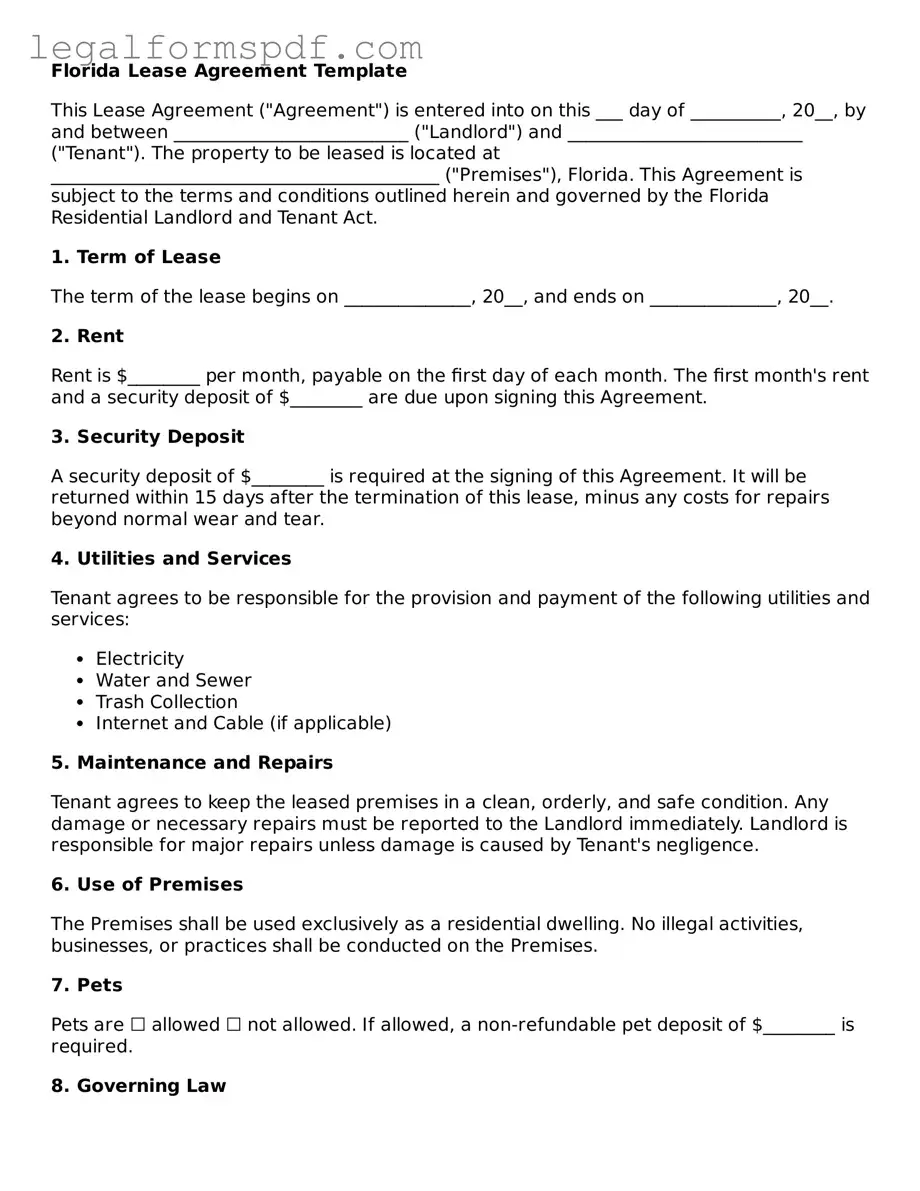Florida Lease Agreement Template
This Lease Agreement ("Agreement") is entered into on this ___ day of __________, 20__, by and between __________________________ ("Landlord") and __________________________ ("Tenant"). The property to be leased is located at ___________________________________________ ("Premises"), Florida. This Agreement is subject to the terms and conditions outlined herein and governed by the Florida Residential Landlord and Tenant Act.
1. Term of Lease
The term of the lease begins on ______________, 20__, and ends on ______________, 20__.
2. Rent
Rent is $________ per month, payable on the first day of each month. The first month's rent and a security deposit of $________ are due upon signing this Agreement.
3. Security Deposit
A security deposit of $________ is required at the signing of this Agreement. It will be returned within 15 days after the termination of this lease, minus any costs for repairs beyond normal wear and tear.
4. Utilities and Services
Tenant agrees to be responsible for the provision and payment of the following utilities and services:
- Electricity
- Water and Sewer
- Trash Collection
- Internet and Cable (if applicable)
5. Maintenance and Repairs
Tenant agrees to keep the leased premises in a clean, orderly, and safe condition. Any damage or necessary repairs must be reported to the Landlord immediately. Landlord is responsible for major repairs unless damage is caused by Tenant's negligence.
6. Use of Premises
The Premises shall be used exclusively as a residential dwelling. No illegal activities, businesses, or practices shall be conducted on the Premises.
7. Pets
Pets are ☐ allowed ☐ not allowed. If allowed, a non-refundable pet deposit of $________ is required.
8. Governing Law
This Agreement shall be governed by and construed in accordance with the laws of the State of Florida.
9. Amendments
Any amendments to this Agreement must be in writing and signed by both Tenant and Landlord.
10. Signatures
By signing below, both parties agree to all terms and conditions outlined in this Agreement:
Landlord's Signature: __________________________ Date: __________
Tenant's Signature: __________________________ Date: __________
